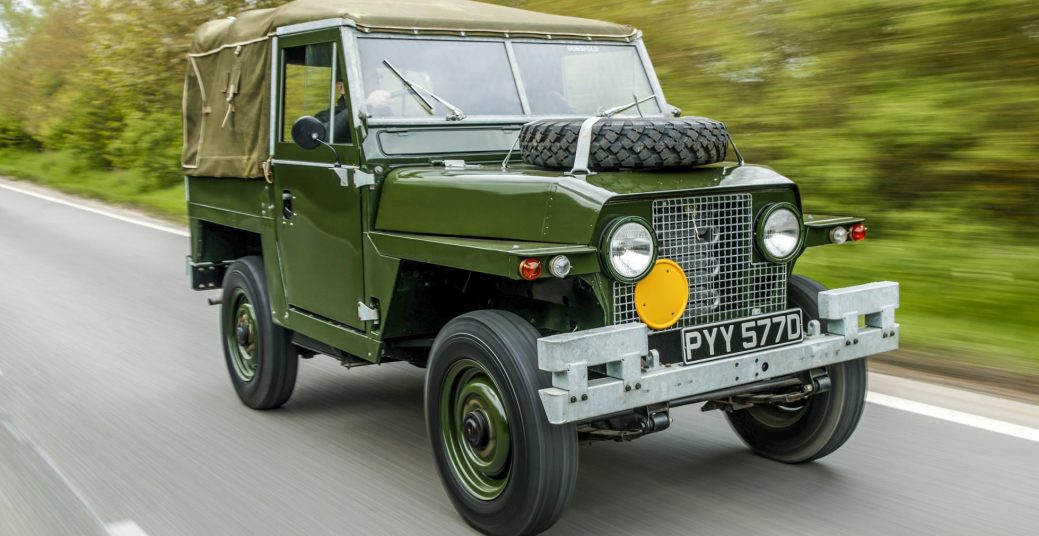Land Rover Military Vehicles

Military Vehicles And Variants
Land Rover vehicles have long since been used as military vehicles across the world. Most noticeably, since their inception, have they been used by the British Army with a number of military-only vehicles entering production, as well as military modified vehicles. Below we explore the different vehicles and variants of Land Rover military vehicles.
The British Army & The Land Rover
Prior to the development of the Series I Land Rover, the British Army commonly used both Willys Jeeps and Chevrolet trucks in its operations. However, following World War II it became clear that a home grown vehicle was necessary for use in both the regular forces and as part of long-range special operations missions.
Work on this started with a project code named FV1800, which resulted in the creation of a Nuffield-built prototype in 1945. After 5 years, this vehicle entered production and, following Nuffield’s merger with Austin, the resulting vehicle was christened the Austin Champ.
Alongside the Austin Champ, the British Army also purchased its first trial batch of the newly produced Series I Land Rover in 1949. These were found to be a great option for the Army because they were cheap, light and featured better fuel economy than other vehicles. So, the Land Rover Series I was ear marked for transport duties behind the lines, while the Austin Champ became the combat vehicle of the hour.
Military Vehicles & Variants
The Land Rover was such a popular vehicle with the British Army that, over time, it was modified to better serve within it. While the Austin Champ was used on the front-line initially, production of this specific vehicle stopped in the mid-50s and a commitment to Land Rover was made.
This spawned a slew of military specific vehicles and variants, including the 101 Forward Control and the Lightweight SIIA & SIII.
Lightweight SIIA & SIII
When the British Army identified a need for a lightweight fighting vehicle that could be transported by air to the front line, the Series IIA SWB was considered as a candidate. However, this vehicle was much too heavy to meet the army’s specific need, so an alternative solution was found.
Instead, the Series IIA was stripped down, with most ‘non-essential’ features being taken away or made smaller. Both the bumper and spare tyre were removed altogether, and the windscreen was switched out for a removable flat panel body, as well as the upper body and doors. The feature made it possible to reduced the weight of the vehicle even further to 2,500lb with their removal.
The vehicle was also made narrower with the addition of new short axels, which not only reduced the weight but ensured it was able to fit on a standard NATO pallet.
The Lightweight IIA went into production in 1968. In 1973 it was replaced by the Series IIIA Lightweight.
In this new iteration of the Lightweight Vehicle the Series III edition saw the headlights move from either side of the radiator grille to the wings, as well as a number of features from the civilian Series III vehicle.
For the most part, both the Lightweight SIIA and SIII featured petrol engines. Further to this, there were a number of variants including 12-volt and 24-volt electrical systems, FFRs, hard tops, and models fitted with a 106mm anti-tank gun.
Production of the Lightweight Series III halted in 1983 following the launch of the Defender 90 and 110 models. Up till then, the Lightweight vehicles had served in the armed forces of over 20 countries, including as the ‘Militar’ which was Spain’s own version.
Land Rover Military Variants
SIIA Ambulance
The SIIA Ambulance was built on the 109” LWB Series IIA vehicle. Built by Marshalls of Cambridge, the vehicle was designed to carry four stretchers and a medic.
SIIA Pink Panther
The SIIA Pink Panther is another adaptation of the Series IIA 109”. Designed for use in the desert by the SAS it was used for special operation missions and long-distance reconnaissance.
Amphibious SIIA 109”
Yet another variant of the Series IIA, the Amphibious SIIA was a prototype of a vehicle tat could be used for sea landings. While 50 prototypes were created it never made it to production.
SIIA 109” GS and FFR Vehicles
Both the SIII 109” GS (General Service) and FFR (Fitted For Radio) vehicles were, by and large, very similar to the civilian 109” vehicles. However, whilst in service they were fitted with the Larkspur system as well as a variety of other antennae. These vehicles served from the 70s until the 90s and most commonly were created with features such as dual braking, rear Salisbury axle and an oil cooler.
V8 Centaur Multi-Role Half Track</h4)
The V8 Centaur was based on the V8 Stage 1 vehicle. Created with a track taken from the Scorpion light tank, it represented an attempt to merge road vehicle with a tank.







